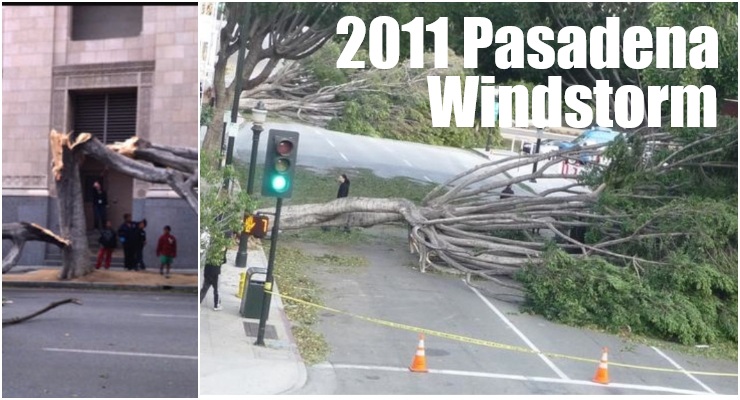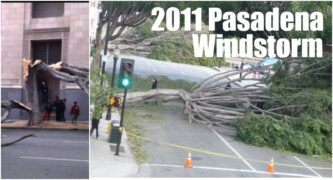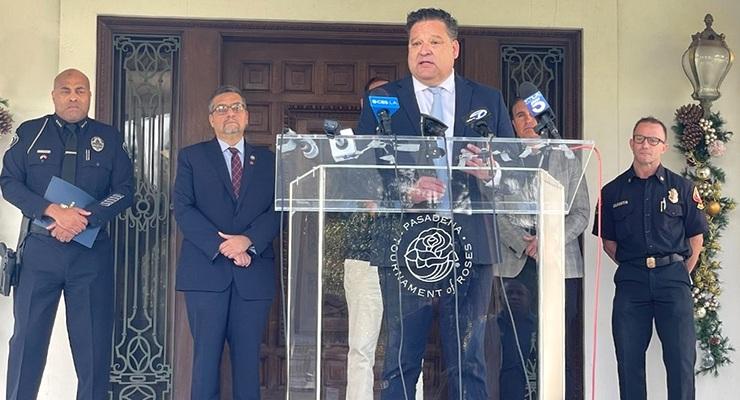
Remarkably, no deaths were reported and injuries were few.
The fierce winds, reaching 80 mph in the valley and up to 97 mph at Whitaker Peak near Castaic Lake, created a disaster zone across more than a dozen cities.
In Pasadena alone, the storm felled over 1,200 trees, crushed vehicles, damaged hundreds of buildings, and left 6,000 local residents without power.
Multiple cities declared states of emergency as schools closed from Pasadena to Glendora. City building inspectors examined hundreds of structures, ultimately “red-tagging” 42 buildings as uninhabitable and “yellow-tagging” six more for moderate damage. Well over 200 structures sustained serious damage citywide.
At the historic Huntington Library, more than 100 specimen trees were lost from its renowned gardens. The city’s infrastructure took a massive hit: 19 of 112 primary electrical circuits failed, 100 transformers were damaged, and crews had to replace 7.5 miles of damaged cable and 30 utility poles.
The emergency response stretched local services to their limits.
Pasadena police fielded 2,113 emergency calls during the storm.
Firefighters responded to multiple building collapses and fires, including one incident requiring the rescue of four burn victims.
Southern California Edison faced intense scrutiny after more than 400,000 customers lost power, many for up to a week. The California Public Utilities Commission launched an investigation into why the outages lasted so long.
“The November windstorm was an unplanned drill for a more serious natural disaster in the future,” Schiff added, “and we can learn from the problems we encountered. There are many improvements to make, and all utilities can take the lessons of the Windstorm response to heart by implementing the lessons learned.”
The financial aftermath proved equally challenging. Despite lobbying from local officials, both the Federal Emergency Management Agency and the State of California declined to provide disaster funding.
Pasadena alone faced a $14.5 million cleanup bill, forcing departments to tap reserves and consider rate increases to cover costs.
The Public Works Department, which logged 1,382 incidents on the first day and ultimately handled 6,407 cases, confronted a $3.6 million expense. The disaster’s scope included damage to 50 traffic signals, structural damage to 55 street lights, and necessary repairs to 375 more.
Looking back, the 2011 windstorm stands as one of the most destructive weather events in recent Pasadena history, leaving an indelible mark on the city’s landscape and exposing critical vulnerabilities in emergency response systems that officials continue to address.



















